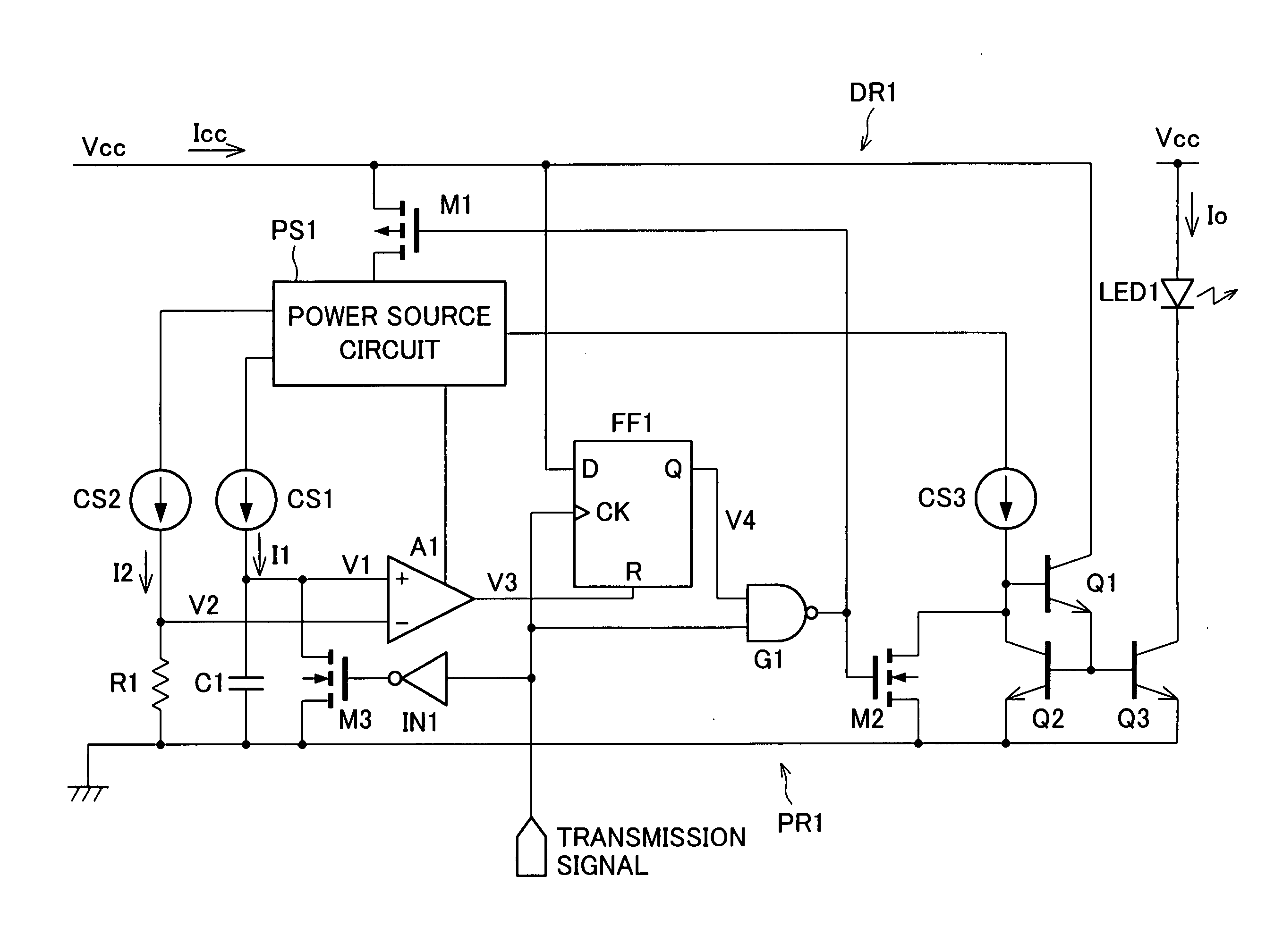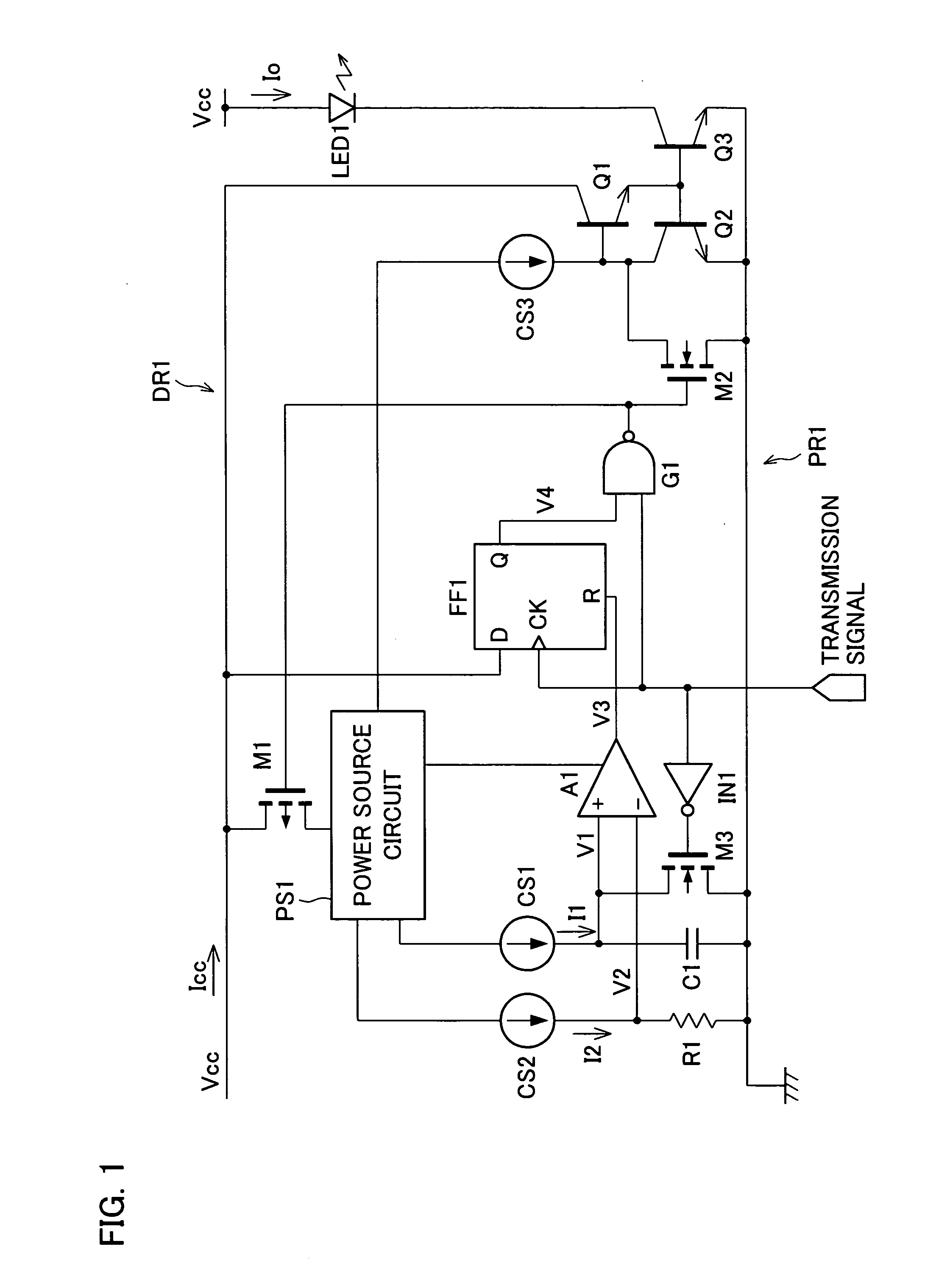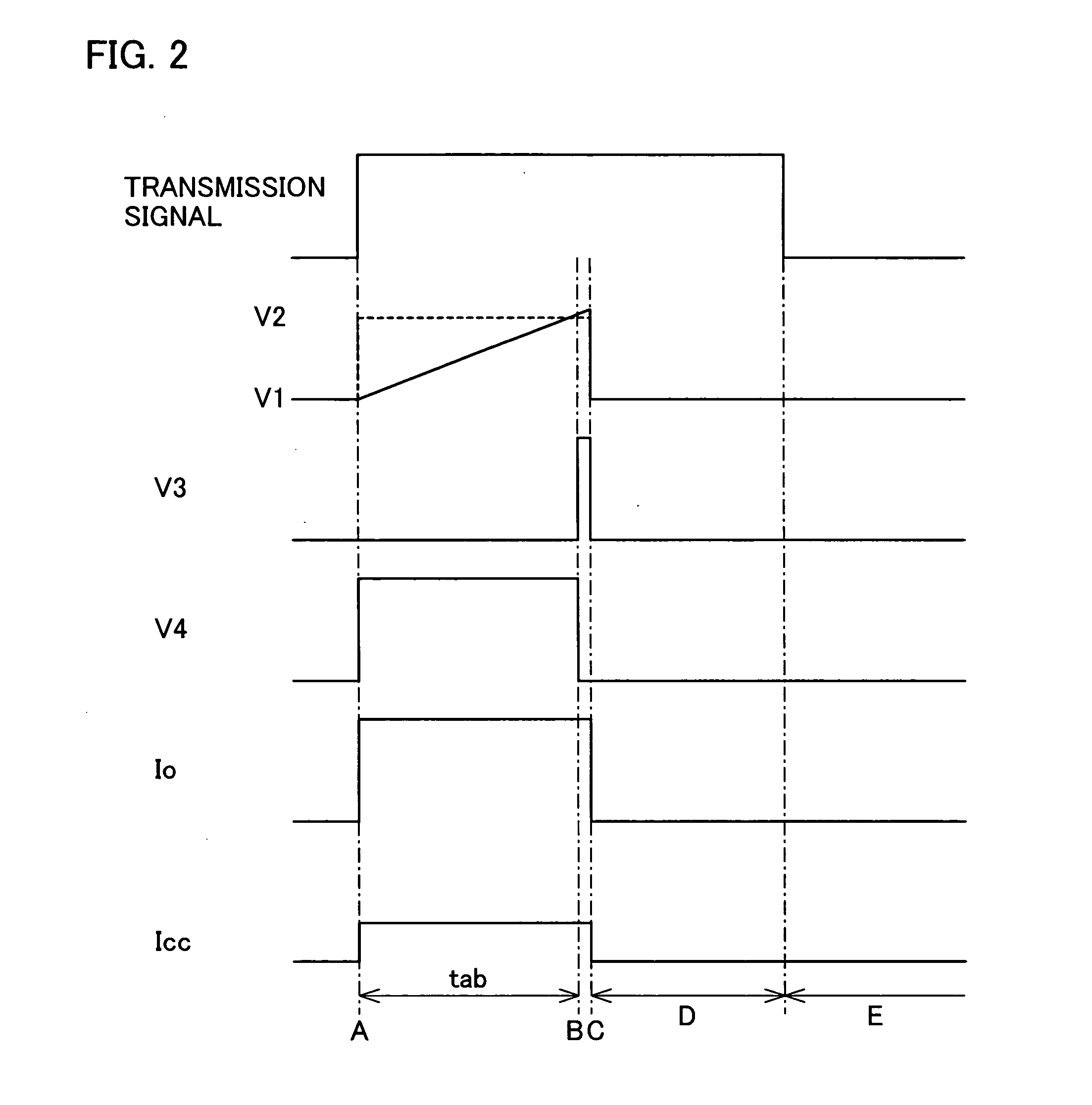Infrared transmitter circuit and electronic device
a transmitter circuit and infrared technology, applied in the field of transmitter circuits, can solve the problems of short time in which the device can be used, deterioration or damage of light emission diodes, and increase power consumption, and achieve the effect of reducing power consumption
- Summary
- Abstract
- Description
- Claims
- Application Information
AI Technical Summary
Benefits of technology
Problems solved by technology
Method used
Image
Examples
embodiment 1
[Embodiment 1]
[0031] The following description will explain one embodiment of the present invention with reference to FIG. 1 and FIG. 2.
[0032]FIG. 1 shows an arrangement on an infrared transmitter circuit according to the present embodiment. Further, FIG. 2 shows an operation timing of the infrared transmitter circuit.
[0033] As shown in FIG. 1, the infrared transmitter circuit includes a light emission diode LED1 which emits infrared ray as a light emission element. Further, as a driving circuit DR1, the infrared transmitter circuit includes a power source circuit PS1, transistors Q1 to Q3, transistors M1 to M3, constant current sources CS1 to CS3, a NAND gate G1, a D flip-flop FF1, a comparator A1, an inverter circuit IN1, a resistor R1, and a capacitor C1. Each of the infrared transmitter circuit of the present embodiment and infrared transmitter circuits of other embodiments described later is integrated and is provided in an infrared communication element.
[0034] In the infrar...
embodiment 2
[Embodiment 2]
[0052] The following description will explain Embodiment 2 with reference to FIG. 3 to FIG. 5. Note that, in the present embodiment, the same reference signs are given to components having the same functions as those of components described in Embodiment 1, and description thereof is omitted.
[0053]FIG. 3 shows an arrangement of an infrared transmitter circuit according to the present embodiment. Further, FIG. 4 shows an operation timing of the infrared transmitter circuit.
[0054] As shown in FIG. 3, the infrared transmitter circuit is different from the infrared transmitter circuit of Embodiment 1 (FIG. 1) in that: the constant current source CS2, the resistor R1, and the comparator A1 are omitted, and inverter circuits IN2 and IN3 are added. In the infrared transmitter circuit, the transistors M1 to M3, the constant current sources CS1 and CS2, the NAND gate G1, the D flip-flop FF1, the inverter circuits IN1 to IN3, and the capacitor C1 constitute a protection circui...
embodiment 3
[Embodiment 3]
[0076] The following description will explain Embodiment 3 with reference to FIG. 6 and FIG. 7. Note that, in the present embodiment, the same reference signs are given to components having the same functions as those of components described in Embodiments 1 and 2, and description thereof is omitted.
[0077]FIG. 6 shows an arrangement of an infrared transmitter circuit according to the present embodiment. Further, FIG. 7 shows an operation timing of the infrared transmitter circuit.
[0078] As shown in FIG. 6, the infrared transmitter circuit is different from the infrared transmitter circuit of Embodiment 2 (FIG. 3) in that: the constant current source CS1, the inverter circuit IN3, and the D flip-flop FF1 are omitted, and a resistor R2 and a transistor M4 are added. The transistor M4 is a P-channel FET. In the infrared transmitter circuit, the transistors M1 to M4, the NAND gate G1, the inverter circuits IN1 and IN2, the resistor R2, and the capacitor C1 constitute a p...
PUM
 Login to View More
Login to View More Abstract
Description
Claims
Application Information
 Login to View More
Login to View More - R&D
- Intellectual Property
- Life Sciences
- Materials
- Tech Scout
- Unparalleled Data Quality
- Higher Quality Content
- 60% Fewer Hallucinations
Browse by: Latest US Patents, China's latest patents, Technical Efficacy Thesaurus, Application Domain, Technology Topic, Popular Technical Reports.
© 2025 PatSnap. All rights reserved.Legal|Privacy policy|Modern Slavery Act Transparency Statement|Sitemap|About US| Contact US: help@patsnap.com



